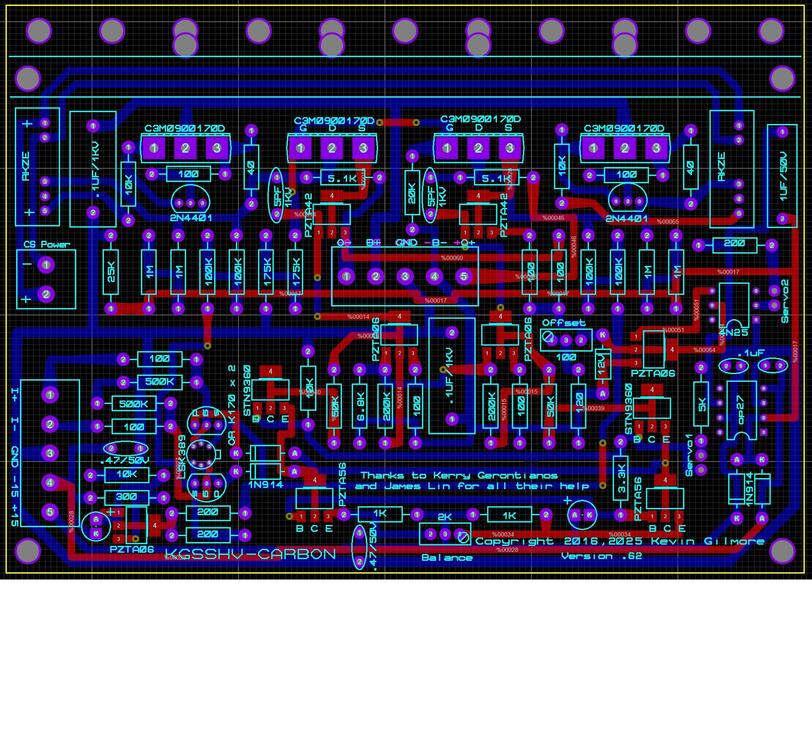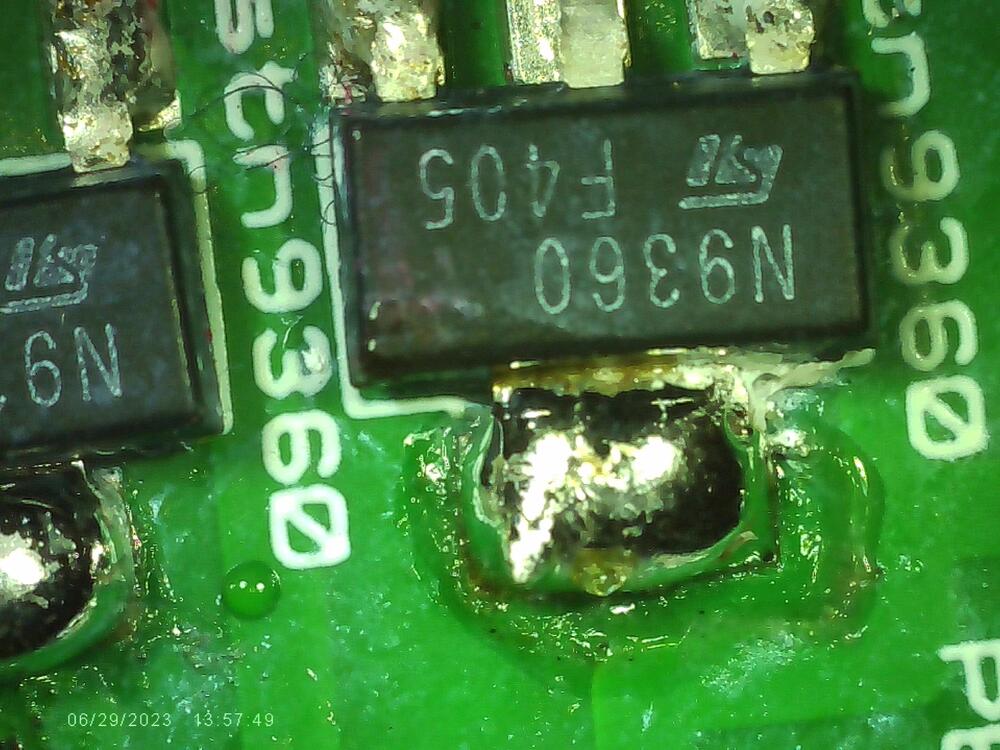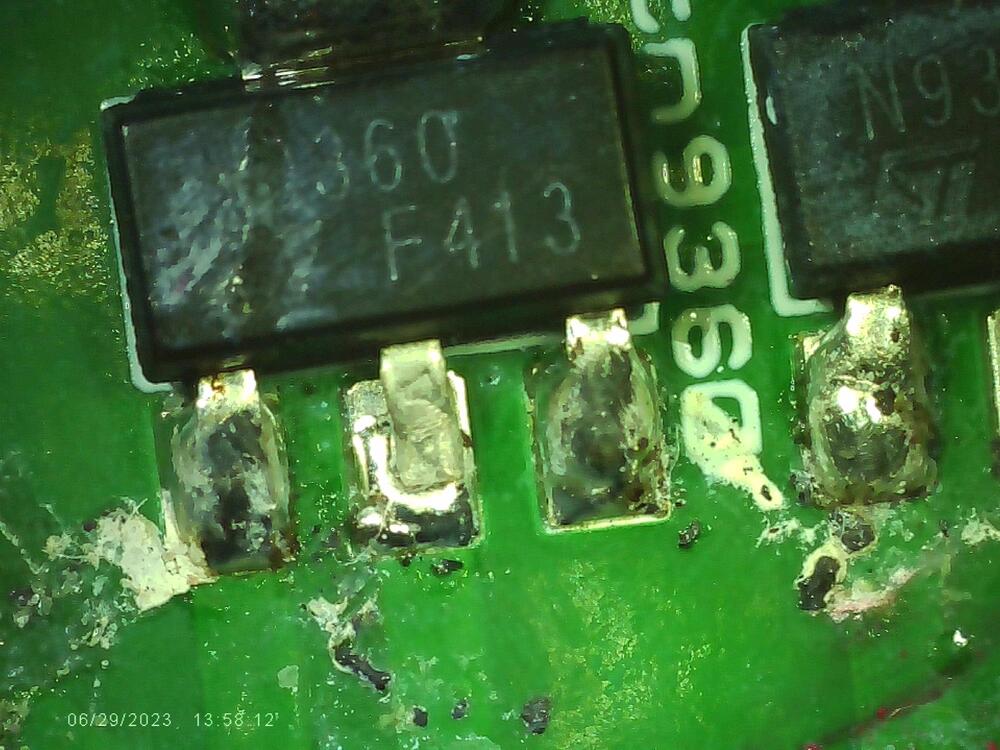-
Posts
7,182 -
Joined
-
Last visited
-
Days Won
21
Content Type
Profiles
Forums
Events
Everything posted by kevin gilmore
-
so here is the latest version of the kgsshv-carbon with the c3m series parts including the current source. Good for up to +/-600v power supplies. board file updated. kgsshvcarbon600v.PDF kgsshvcarbonv6.1c3cs - CADCAM.ZIP
-

finally an electrostatic transportable
kevin gilmore replied to kevin gilmore's topic in Do It Yourself
never expected thermal runaway because birgir has been selling the much higher power version and its completely stable. those particular resistors due to the heat really drift. like 10%. and in the wrong direction. with the resistors replaced by current sources its stable. so much easier to make really higher power things. -

the problem of "Agave Electrostatic Amplifier"
kevin gilmore replied to Omega_ELS's topic in Headphone Amplification
moar better. by a fair bit. i'm sure i can find a better cascade part. the battery is a dc to dc converter (4kv isolation rated) and is < $10. with suitable heatsinks bias should be about 25ma. the 30uf things are film caps. nothing i know of is smaller and rated at 1kv. mosfetout.PDF -

the problem of "Agave Electrostatic Amplifier"
kevin gilmore replied to Omega_ELS's topic in Headphone Amplification
it should be noted that with the 1700 volt output stage parts, its real easy to upgrade to +/-600 volt power supplies. going to need a much bigger box with heatsinks on both sides. -

When modding goes off the rails...
kevin gilmore replied to spritzer's topic in Home Source Components
viva does the same shit wrapping various capacitors with wool of some kind. -

Megatron Electrostatic Headphone Amplifier
kevin gilmore replied to kevin gilmore's topic in Do It Yourself
better put a 300v zener across the output of the h11d -

the problem of "Agave Electrostatic Amplifier"
kevin gilmore replied to Omega_ELS's topic in Headphone Amplification
highly similar to hev70 sennheiser amp. and by that i mean n-channel fet as current source into another n-channel fet with grounded gate drive. sennheiser amp single high voltage + 600v. this amp +/-400v (initial guess on current way off) output device is infineon imw120r350m1 which has input capacitance of 3460pf. kind of high. there are better parts to use. like this one. C3M0900170D which has input capacitance of 202 pf. calculated output current is about 12.5ma and about 5 watts per heatsink. going to get fairly hot. mc33078 opamps perform very differently inverting and non-inverting. koss esp950 uses the same part in a very different way. much better ways of doing the unbalanced to balanced conversion. power supply about as basic and cheap as possible. the chinese will do this for less than $500. which means that this is infinitely better than the topping eha5. likely sounds better too. -
if you take one of the cooper male and stick it into a real stax manufactured socket, you will find the fit extremely tight and you cant stick the plug all the way in. eventually the stax socket cracks. (queue steve) my document was created with a real stax plug (actually a few of them) and a very high resolution optical comparator. but 11.05 seems an odd number. Likely the original spec somewhere inside stax is 11.00 mm. makes the most sense. the optical comparator read everything out as X and Y which is why the conversion that should be perfect (to at least 4 digits) maybe not so perfect.
-
there are a couple of places that sell the same thing that are not ebay. circlotron power supply works fine for 700v, 800v etc.
-
was planning on using the teflon versions on ebay. but i think that ceramic one is exactly the same size.
-
no real reason to shrink the filament board, but go ahead and try. the output tube spacing is already at the minimum and that results in a specific board size. no reason for the filament board to be any smaller than that because all the holes need to line up. filament board stacks on the output board.
-

the problem of Reference Amplifier for Electrostatic"
kevin gilmore replied to Omega_ELS's topic in Headphone Amplification
the power supply is clearly labeled as +350 and -350. so an absolute maximum of 1400 volts peak to peak stator to stator. which is 500vrms. not 630 vrms. the same as every stax amp with these power supplies. srmt1 all versions, srm717 srm727 etc. looks almost identical to the koss circuit with bipolar outputs replacing the mosfets. push pull. no idea of maximum output current. lots of opamps with huge amounts of feedback. if its cheap enough, might be worth it. probably not. -
owning a z06 with a zr1 on order, i am more than happy with these results. z06 beating cars that are 3 times the price or more, seems pretty impressive. and driven by gm engineers. pretty sure a real race car driver would do quite a bit better.
- 2,104 replies
-
- 3
-

-
- Golf Mafia
- M Sport
-
(and 1 more)
Tagged with:
-
chuck mangione dead at 84.
-
2sa1968 is in fact a PNP 900v. 2sc1968 is a 500mhz rf amplifier.
-
wow, you take off 2 hours to watch a movie and then all of this. if that class B output section could actually deliver 1 amp or more that is required for just about every single planar or ribbon then maybe it might actually perform correctly. but the opamp cannot possibly supply enough current to drive the output stage. all the feedback in the world won't help. and for real world loads R2 actually makes it worse. multiple feedback loops and it looks just like the squarewave of the nfca module. more like a stair step. something the AP cannot possibly measure. hint: look at the quad current dumper. class B output section. performs well within its power limit. all this to reduce the current capabilities of the power supply. all this to reduce the heat generated because the heatsinks are way to small. yes its a piece of unreliable garbage.
-
topping dx5ii schematic class B output stage. and they seem to be proud of this crap. discuss dx5ii.PDF
-
ST does not have a fab in china. but they do have a back end site in china where the silicon is cut up and packaged. so the box says made in china. Wolfspeed (formerly cree) also uses a back end site in china. which is why the c2m1000 is stamped china.
-
that box is 1000 pieces. the mouser price for that is $283. i cannot imagine fakes for prices that low. fake 2sj79 are going for about $15 each. which is why there are tons of fakes on ebay. the typical hfe of 200 is the only spec on the datasheet. no minimum or maximum hfe specified.
-
the 3rd one is the only one with the box after the cree label that matches parts i have. my parts mostly have a w13814 date code
-
-
i just looked at what i had in stock. F405 and F413. both work fine. logo looks printed on. not etched and not stamped either.
-

Megatron Electrostatic Headphone Amplifier
kevin gilmore replied to kevin gilmore's topic in Do It Yourself
probably easier to change the cathode resistors on the current sources. -
mauser was legit. went bankrupt more than 10 years ago. they produced firearms. german manufacturer. mouser is definitely legit. never got a fake part from them yet.
-

Megatron Electrostatic Headphone Amplifier
kevin gilmore replied to kevin gilmore's topic in Do It Yourself
so more than a few people are getting clobbered with 300b that don't even come close to the original published western electric document. of the 7 different varieties i have, only the original 1960's manufactured western electric comes even close to the spec. and the new western electric tubes come in low vgk and high vgk versions. (The B series tubes) just means you have to mess with the resistors. and yep its a major pain in the ass. the el34 original version pretty much worked +/- a few volts no matter what tube you stuffed in there as long as they all from the same manufacturer. or build a megatronxxl now known as optimus-prime. more money, but less of a balance problem.







